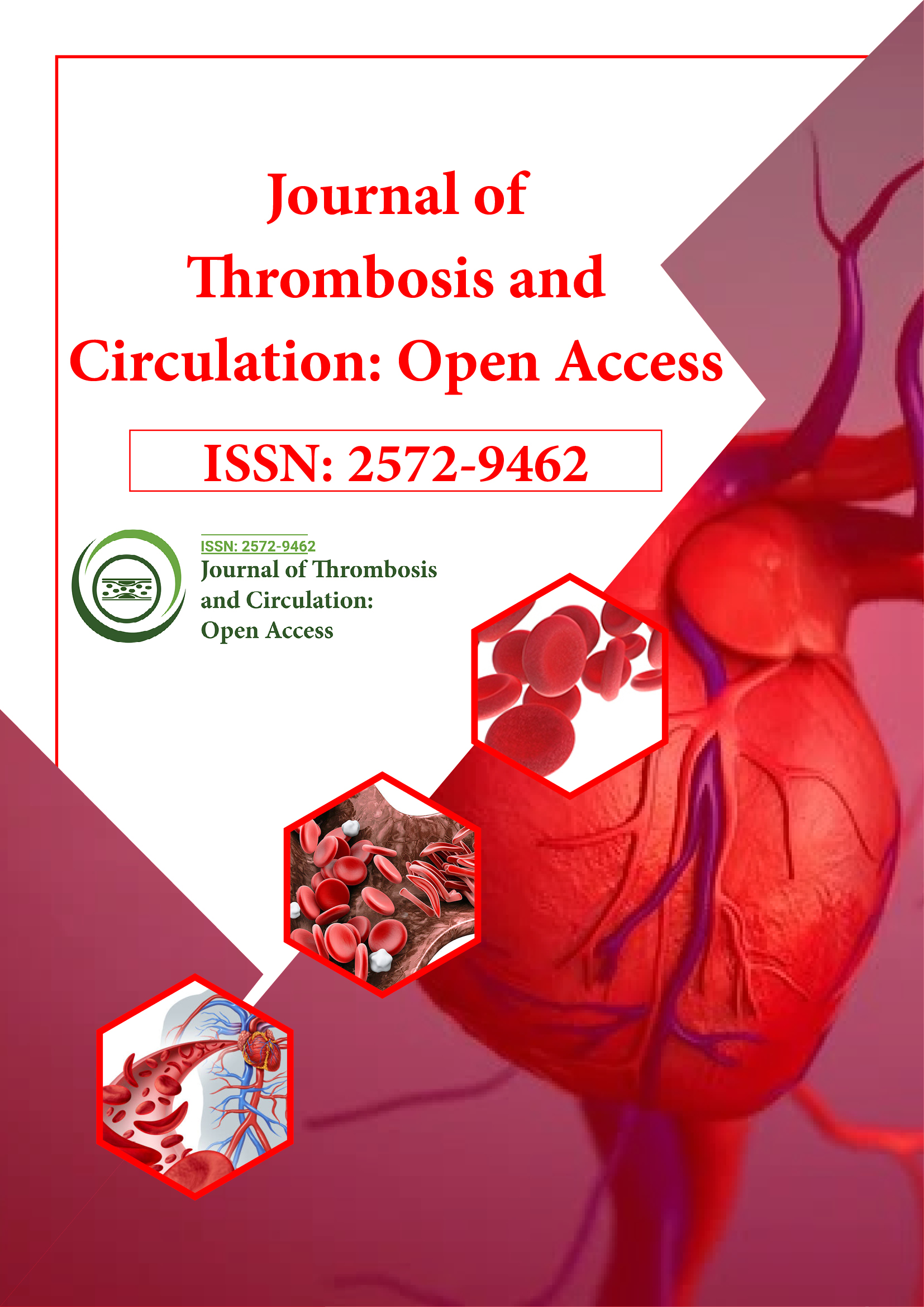Indexed In
- RefSeek
- Hamdard University
- EBSCO A-Z
- Publons
- Google Scholar
Useful Links
Share This Page
Journal Flyer

Open Access Journals
- Agri and Aquaculture
- Biochemistry
- Bioinformatics & Systems Biology
- Business & Management
- Chemistry
- Clinical Sciences
- Engineering
- Food & Nutrition
- General Science
- Genetics & Molecular Biology
- Immunology & Microbiology
- Medical Sciences
- Neuroscience & Psychology
- Nursing & Health Care
- Pharmaceutical Sciences
Opinion Article - (2022) Volume 8, Issue 1
Brief Note on Thromboembolism
Jae Kim*Received: 29-Dec-2021, Manuscript No. JTCOA-22-1120; Editor assigned: 31-Dec-2021, Pre QC No. JTCOA-22-1120; Reviewed: 14-Dec-2022, QC No. JTCOA-22-1120; Revised: 17-Jan-2022, Manuscript No. JTCOA-22-1120; Published: 24-Jan-2022, DOI: 10.35248/2572-9462, 22.1.179
Description
People who have hada stroke will recover best if they receive immediate treatment. If a person have symptoms of suspected stroke, someone should take him to the emergency room immediately or call 911 for help. The healthcare provider will ask the person about his medical history and do a physical examination. Venous thromboembolism refers to a thrombosis that begins in a vein. It is the third most common vascular diagnosis after a heart attack or stroke, affecting 300,000 to 600,000 Americans each year.
Deep Vein Thrombosis (DVT)
Deep vein thrombosis is usually a blood clot in the deep veins of the legs. DVT can affect the arms and other veins.
Pulmonary Embolism (PE): Pulmonary embolism occurs when a DVT thrombosis moves away from the venous wall into the lungs, blocking all or part of the blood supply. Blood clots that form on the thighs are more likely to break and move to the lungs than blood clots in the lower legs or other parts of the body.
Types of thromboembolism
There are two different types of thromboembolism, they are:
• Venous thromboembolism and
• Arterial thromboembolism
What is venous thromboembolism?
Venous thromboembolism occurs when a blood clot breaks and blocks a vein. Venous thromboembolism often begins in the legs with a condition known as Deep Vein Thrombosis (DVT). When a blood clot breaks and stays in the lungs, it causes a serious condition called Pulmonary Embolism (PE). PE can be fatal depending on the location of the embolus and the degree of blood flow obstruction. Venous thromboembolism in the broad sense generally refers to DVT, PE, or a combination of both (DVT/PE). Apart from that, thromboembolism can affect other veins in the body, both deeply and superficially. The less common areas of venous thromboembolism are the arms, liver, kidneys, and brain.
Symptoms of venous thromboembolism
Deep Vein Thrombosis (DVT): Thrombosis, cramps, body swelling, warmth, pain, hardening of veins, redness or darkening of the skin on one leg.
Pulmonary Embolism (PE): Sudden shortness of breath, rapid breathing, chest pain, hemoptysis, bluish discoloration of the lips and fingers (cyanosis).
Cerebral vein thrombosis: Seizures caused by headache, drooping face, weakness of limbs, difficulty speaking, cerebral vein obstruction or cerebral double sinus obstruction.
Portal vein thrombosis: Upper abdominal pain, nausea, swelling of the abdomen, persistent fever caused by obstruction of the portal vein of the liver.
Renal vein thrombosis: Flank or lower back pain, decreased urine output, urinary blood, and swelling of the lower extremities caused by obstruction of the renal veins of the kidney.
The first-line treatment for venous thromboembolism is an anticoagulant, which prevents the growth of blood clots while the body slowly reabsorbs. There are injectable anticoagulants such as heparin and alixtra (fondaparinux), and oral anticoagulants such as kumadin (warfarin), erikis (apixaban), and zarert (rivaloxaban).
A drug called a thrombolytic agent is reserved for severe cases because it can cause bleeding. Options include eminase (anistreplase), reteplase, and streptokinase. If desired, surgery can be done to remove the blood clot that is causing DVT (called thrombotomy) or to remove the blood clot that is causing PE (called embolization).
What is arterial thromboembolism?
Arterial thromboembolism occurs when a blood clot ruptures and blocks an artery, causing ischemia (restriction of blood flow and oxygen) and sometimes infarction (death of tissue due to inadequate blood supply). Most arterial embolisms are accompanied by blood clots. Arterial thromboembolism often occurs in the legs and feet. Some occur in the brain and can cause a stroke or a heart attack (myocardial infarction) in the heart. Less common areas are the kidneys, intestines, and eyes.
The onset of sudden pain is a characteristic symptom of arterial thromboembolism. The most common forms can be recognized by the following signs and symptoms:
Limb infarction: C oldness, numbness, tingling, body pain, cramps, pallor of the skin, decreased pulse of the affected limb.
Heart attack: C hest pain, shortness of breath, heavy sweating, weakness, drowsiness, nausea, vomiting, sweating.
Stroke: Sudden walking, conversation, difficulty understanding, and numbness or numbness in the face, arms, or legs.
Some of the same tests used to diagnose venous thromboembolism can also be used to diagnose arterial thromboembolism. Others are professional and specific. These include:
Blood tests: Including dimer, factor VII, platelet aggregation.
Doppler or dual ultrasound: Used to detect arterial thrombosis using sound waves.
Echocardiography: Used to visualize the movement of the heart using reflected sound waves.
Tran’s Esophageal Echocardiography (TEE): A type of echocardiography in which a transducer (sensor) is inserted into the throat and esophagus.
Myocardial Contrast Echocardiography (MCE): A type of ultrasound scan that injects small micro bubbles to obtain a more detailed image of the movement of the heart.
Pletismography: A test that measures changes in arterial volume using blood pressure cuffs and sensors.
Trans cranial doppler scan: Used to detect blockages in the arteries that supply the brain.
Citation: Kim J (2022) Brief Note on Thromboembolism. J Thrombo Cir. 8:179.
Copyright: © 2022 Kim J. This is an open-access article distributed under the terms of the Creative Commons Attribution License, which permits unrestricted use, distribution, and reproduction in any medium, provided the original author and source are credited.
